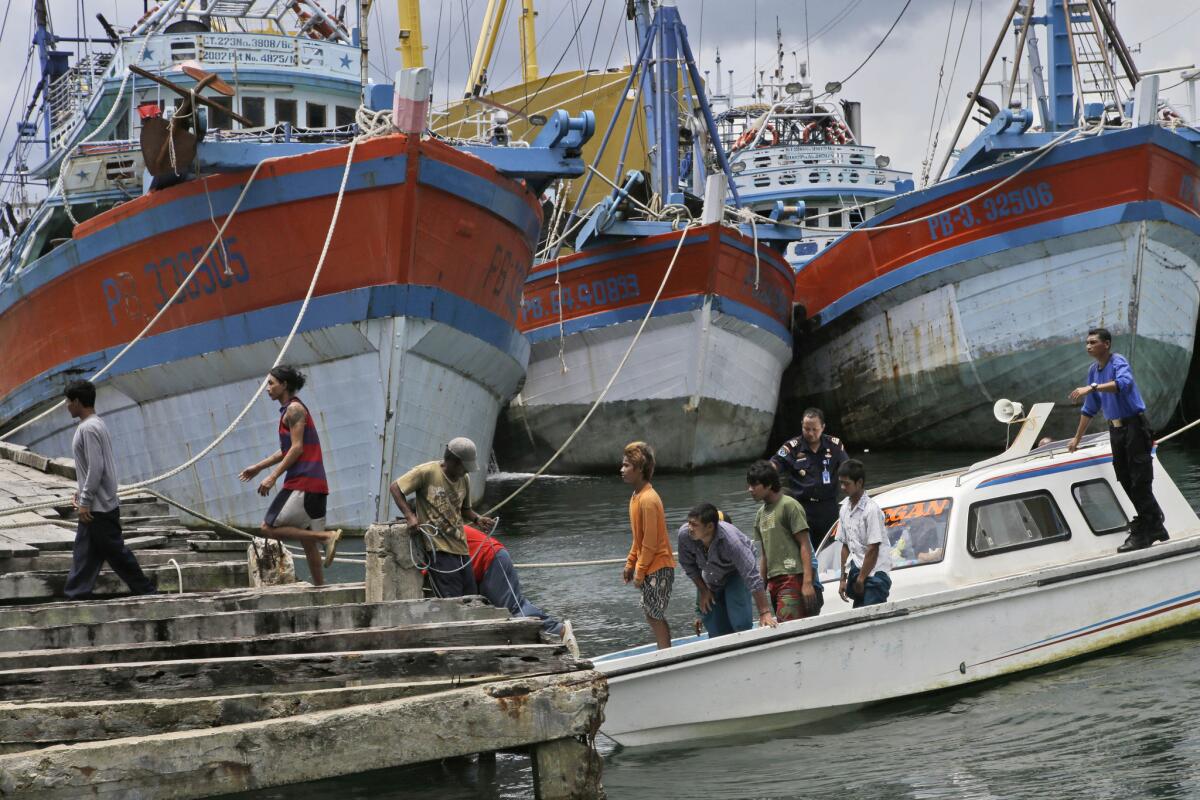Editorial: Shutting off the flow of slave labor goods to the U.S.

Burmese fishermen arrive at the compound of Pusaka Benjina Resources in Benjina, Aru Islands, Indonesia as hundreds of foreign fishermen rush at the chance to be rescued from the isolated island where slavery runs rampant in the industry.
- Share via
The United States has for 86 years banned the import of goods produced using forced labor — unless, as the Tariff Act of 1930 put it, the goods “are not mined, produced, or manufactured in such quantities in the United States as to meet the consumptive demands of the United States.” That’s right, you read it correctly: The nation stands against importing goods made by slave labor unless we really want them.
That repugnant loophole is about to get closed, and the ramifications could be significant. President Obama is expected this week to sign the recently passed Trade Facilitation and Trade Enforcement Act of 2015, which would do away with the exemption. This is no symbolic step. Forced labor fuels $51 billion a year in profits in international trade, not including sex trafficking, according to the International Labor Organization, which estimated that more than 14 million people worldwide work “as a result of force, fraud or deception” in homes, factories, mines and farms. The U.S. Department of Labor lists 319 foreign goods that it believes are produced with child labor (usually forced), and 102 goods with forced adult labor, including Brazil nuts from Bolivia, cocoa from West Africa, rice from India and seafood from Thailand.
It is the use of forced labor on fishing boats and factory ships based in Southeast Asia that have helped drive this despicable practice into public view. For years, migrant workers there have fallen into the hands of unscrupulous human traffickers who sell them to ship captains, who use brutal violence and the isolation of the high seas to maintain control. The Guardian and the Associated Press have documented the practice, closely linked to Thailand’s fishing industry, as have some advocacy groups.
Efforts to undermine seagoing slavery could be further helped by an unrelated rule that has been proposed in the United States to protect overfished species and make it tougher to mislabel fish. The rule would require importers to divulge the “chain of custody” of seafood from the ship that caught it or the farm that raised it to “the point of entry into U.S. commerce,” creating a database that federal officials say can help customs agents pinpoint the sources of imported fish.
Human rights groups have hailed the closing of the import loophole, as well as similar steps being taken in Europe, as significant actions to curb international slavery. Enforcement will be key, but banning forced-labor imports and requiring more transparency in supply chains will make it harder to exploit vulnerable people around the world. Will this mean higher costs for consumers? Maybe. But if the trade-off for cheap imports is supporting slavery, then let the prices rise.
Follow the Opinion section on Twitter @latimesopinion and Facebook
More to Read
A cure for the common opinion
Get thought-provoking perspectives with our weekly newsletter.
You may occasionally receive promotional content from the Los Angeles Times.









